What Your Tongue Reveals About Your Health: A Brief Guide
Your tongue, believe it or not, is kind of a sneaky health report card. It’s like a tiny dashboard that can give you a quick read on what’s actually happening inside your body. The color, the texture, all of it can give you some surprisingly useful clues about what’s happening internally. It can tell you if you’re a bit dehydrated, or if you’ve got some kind of infection, or even point to other, more serious health stuff.
By taking a quick peek at it every now and then, you can catch potential issues before they become bigger problems. We’re talking about things like low B12 or iron, dehydration, oral infections like thrush, or even digestive issues like acid reflux.
It’s pretty simple to do a quick self-check, too. Just look at it in the morning light before you brush your teeth. Stick it out all the way to check the sides and the underside. You can even run a clean finger over it to see if the texture feels weird. And hey, if you notice something odd, just snap a quick photo on your phone so you can track it over time.
What Does a Healthy Tongue Look Like?
Before you start worrying about every little change, it’s super important to know what’s normal. Your tongue is more than just an organ for tasting and talking. It’s also a mirror, reflecting your overall well-being: tongue appearance and health are directly linked. Understanding its baseline is, well, the first step in spotting when something might be off.
So, what does a healthy tongue look like? Honestly, there are a few features that are pretty easy to spot. The first and biggest clue is definitely the tongue color — health indicators you always have at hand.
You’re looking for a light to medium pink shade, kind of like fresh salmon, you know? It should be the same color all over, with no weird, splotchy patches. And hey, it’s totally normal to have a thin, whitish coating on top: that’s just a mix of saliva, bacteria, and dead cells. No biggie. Think of your tongue like a mood ring, but for your health; subtle shifts in color can really tell you a lot.
What Different Colors Mean: Tongue Color Guide for Health
The color of your tongue is a huge clue. What color is a healthy tongue? A light-to-medium pink is the goal: that means you’re well-hydrated and have good blood flow. But what about the others? They could be unhealthy tongue colors.
Here are the basic tongue color meanings, kind of a healthy tongue color chart for quick reference:
- Bright Red, or “Strawberry Tongue”: This could be a sign of a vitamin deficiency, like B12 or iron. It might also be a symptom of scarlet fever or, in kids, Kawasaki disease, which needs immediate medical attention.
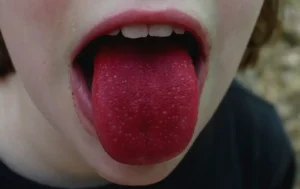
- Yellow: This is often a sign of bacterial overgrowth from poor oral hygiene, or it could be a stain from things like smoking or drinking a lot of coffee. Sometimes, it’s also linked to acid reflux.
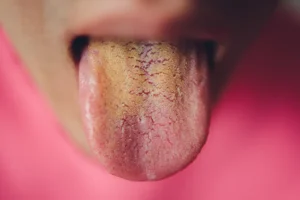
- Black or Brown: This can look a little scary, but it’s usually harmless. It’s often called “black hairy tongue” and it happens when the papillae get overgrown and trap bacteria. Smoking, antibiotics, or too much coffee can all cause this. The good news? It’s usually reversible if you clean up your habits and oral care.
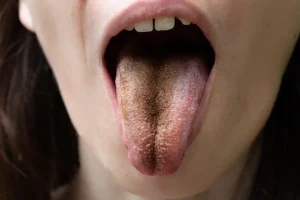
- Blue or Purple: This is one you definitely don’t want to ignore. It could mean poor oxygen flow or circulation issues, which is a serious red flag. If your lips or nails are also looking a little blue, you should probably see a doctor right away.
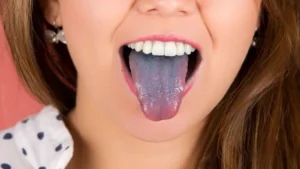
- Pale or White: If your tongue looks almost white, it could be a sign of anemia or chronic fatigue. A simple blood test can often confirm a deficiency.

The Texture: Not Too Smooth, Not Too Bumpy
Your tongue isn’t meant to be perfectly smooth. It should have these little velvety bumps on it, called papillae, which are home to your taste buds and also help you grip food when you’re eating. A healthy tongue shouldn’t have deep cracks or grooves, though some people naturally have minor fissures. Extreme cracking, however, could be a red flag. Your tongue also needs to be moist: not too dry and parched, but not excessively wet or slimy either.
No Pain, No Problem
If your tongue is healthy, it should not hurt. It shouldn’t have that burning feeling (unless, you know, you just ate something way too spicy), and it definitely shouldn’t feel tingly or numb. Sore spots or ulcers could just be from accidentally biting it, but if they stick around, it might be worth a closer look.
Tongue Texture: Bumps, Cracks, and More
It’s not just about color; tongue texture health is also a big deal.
- Smooth and glossy tongue: If your tongue looks slick, like a bald tire, it might be a sign of a vitamin deficiency, particularly B12 or iron.
- Cracked or fissured tongue: These are usually harmless, but you should make sure to brush your tongue gently and stay hydrated, since deep cracks can be a hiding spot for bacteria.
- Bumps and sore spots happen sometimes, sure. They can be little canker sores triggered by stress or something you ate that was too acidic, or maybe even an allergic reaction. The key thing is, if they don’t go away, you should probably get them checked out.
And those veins under tongue? It’s completely normal to have them, but if they start looking super big or really dark, that could be a clue for something like high blood pressure or, in rare cases, liver issues.
Tongue Piercings and Tongue Health
If you’ve got a tongue piercing (or are considering getting one), keeping it healthy is key, because let’s be real, nobody wants an angry, swollen tongue. A healthy tongue piercing should look clean, with no excessive redness, swelling, or weird discharge after the initial healing period (which usually takes 4-6 weeks). The skin around the jewelry should be pink, not dark red or irritated, and the piercing itself shouldn’t feel hot or throbbing. Oh, and that metal ball? It shouldn’t be sinking into your tongue: that’s a sign of swelling gone wrong.
Keeping your tongue piercing in good shape isn’t rocket science, but it does take some know-how. First off, skip the stinging alcohol mouthwashes—a simple saline rinse does the trick without the burn. And I get it; that new metal in your mouth is basically begging to be fiddled with, but try to resist. Constant playing with the jewelry just drags out the healing process.
Be on the lookout for trouble signs too. If that piercing site stays sore way longer than it should or develops a creepy white halo, your body might be fighting an infection. The goal? A piercing that looks like it belongs there: no angry redness, no weird oozing, just a happy tongue doing its thing (with some extra bling). Bonus: you’ll totally nail that trick where you flip the barbell upside down without anyone noticing.
When to Talk to a Doctor
Look, most of the time, tongue changes are just temporary and nothing to worry about. But some things are worth a doctor’s visit. Let’s take a look at a few signs of an unhealthy tongue.
If you have any sores or lumps that just won’t seem to heal, or if you notice extreme dryness or white patches that you can’t scrape off, it’s definitely time to make an appointment. Those could be signs of more serious stuff, like oral cancer or a condition called leukoplakia, which can be a precursor to cancer.
But what if you are already getting treatment for some disease?
How Medications Affect Your Tongue
Some medications that come with a mile-long list of side effects… and your tongue often ends up as collateral damage. It’s crazy how many prescription drugs and even over-the-counter stuff can leave their mark on your tongue.
Common Medication Tongue Changes
That Weird White Coating: Antibiotics are notorious for this. They kill both bad AND good bacteria, sometimes letting yeast throw a party on your tongue (hello, thrush). Steroid inhalers do this too if you don’t rinse after using them.
Dry Mouth Syndrome: Antidepressants, allergy meds, and blood pressure drugs often turn your mouth into the Sahara. Less saliva = more bacteria buildup = funky tongue colors and textures.
Black Hairy Tongue (Yes, Really): Some antibiotics, antipsychotics, and even Pepto-Bismol can make your tongue look like it grew mold. It’s usually harmless but looks straight-up alarming.
Burning Mouth Feeling: Certain blood pressure meds and diabetes drugs can make your tongue feel like you’ve been sucking on hot coffee all day.
Swollen or Puffy Tongue: ACE inhibitors (common blood pressure meds) sometimes cause this, along with an annoying metallic taste.
Luckily, most medication-related tongue changes fade after treatment ends or when you switch prescriptions. Isn’t it good news?
The Final Word: Your Tongue Deserves Some Care
Taking care of your tongue is surprisingly simple. Just remember to give it a gentle brush whenever you’re brushing your teeth, drink plenty of water, and try to cut down on smoking or drinking too much alcohol. Your tongue is a hard worker, so give it a bit of your attention, and it will pay you back.
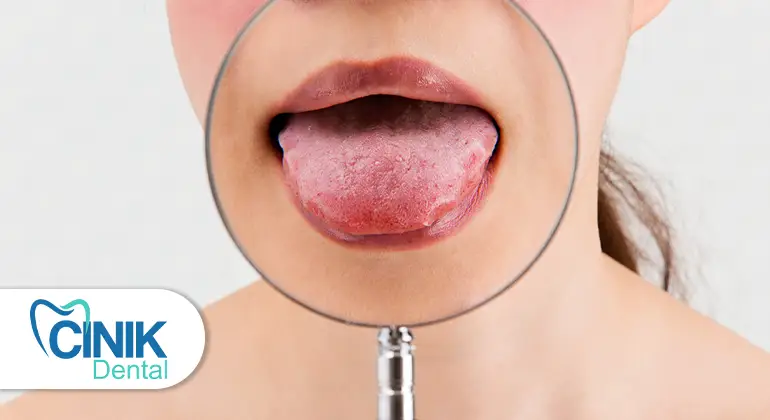

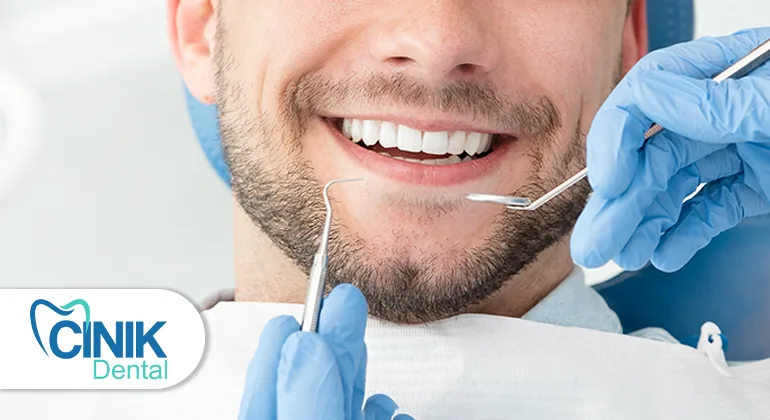
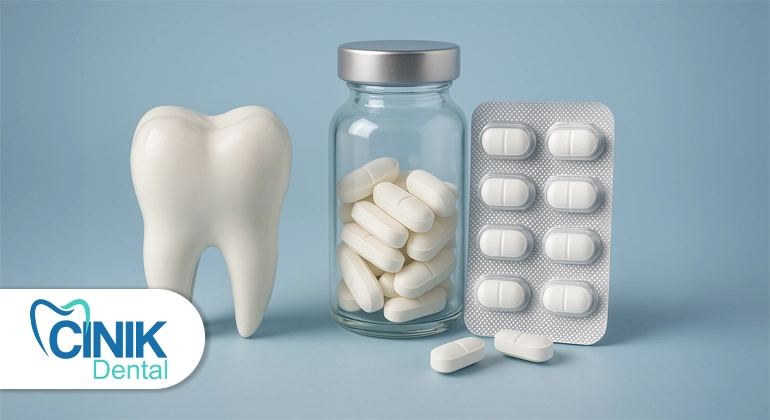
Leave a Reply